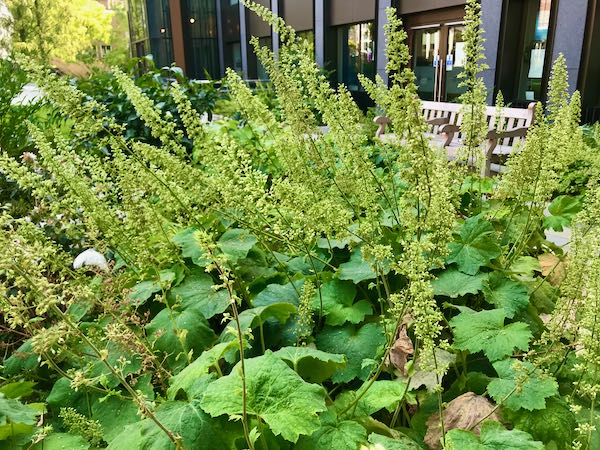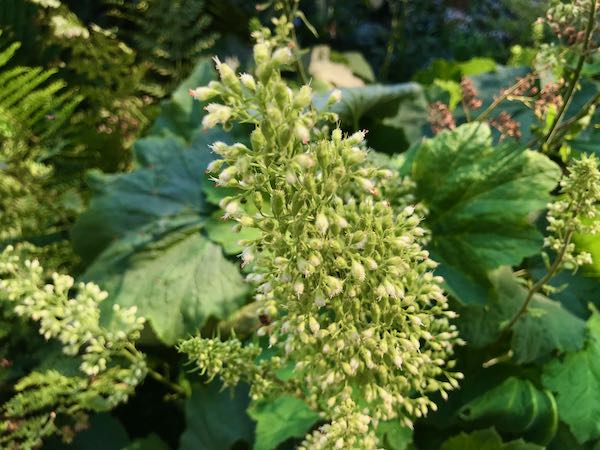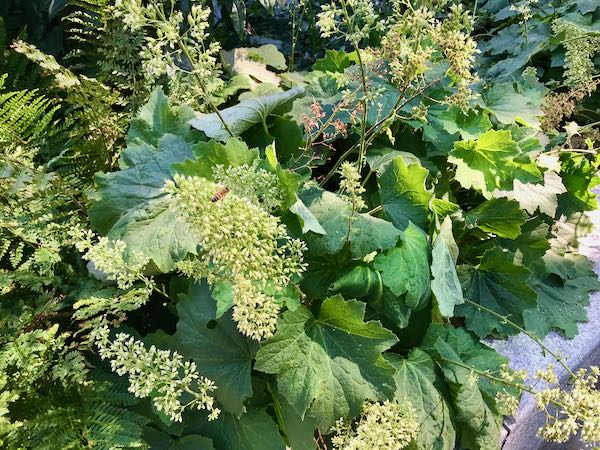Heuchera villosa is an evergreen perennial from the Saxifragaceae family of plants. It is native to the Eastern United States. They also call it the Hairy Alumroot or Hairy Alum Root. The name heuchera honors Johan Heinrick von Heucher (1677-1747), the German botanist, and villosa means covered with hair.

It grows to a height of 2.5ft or 75cm and it is clump-forming. The stems and leaves are hairy, and the foliage is green, large, lobed, and toothed. Pale pink flowers grow in panicles that appear from June to October.
How to grow Heuchera villosa:
Sunlight: Heuchera villosa can tolerate a wide range of light conditions, from full sun to partial shade. However, it tends to prefer partial shade, especially in regions with hot summers. Morning sun and afternoon shade are ideal for this plant.
Soil: Plant Heuchera villosa in evenly moist, fertile, and humus-rich soil. It thrives in well-drained soil that retains moisture without becoming waterlogged. Adding organic matter like compost or well-rotted manure to the soil before planting will improve its fertility and drainage.
Watering: Keep the soil consistently moist but not waterlogged. Regular watering is important, especially during dry periods, to ensure the plant’s health and promote continuous growth. However, avoid overwatering, as excessively wet soil can lead to root rot. Applying a layer of organic mulch around the base of the plant will help retain moisture and regulate soil temperature.
Deadheading: To encourage prolonged blooming and maintain the plant’s overall appearance, remove faded or spent flowers by cutting them back to the base of the plant. This process, known as deadheading, stimulates the growth of new flowers and prevents the plant from redirecting energy to seed production.

Propagation: Heuchera villosa can be propagated through division. Divide mature plants every 2 to 3 years in early spring or early fall. Gently dig up the plant and separate the clumps into smaller sections, ensuring each division has healthy roots and foliage. Replant the divisions in suitable locations and water them well to help with their establishment.
Wildlife Attraction: Heuchera villosa is known to attract butterflies and bees with its nectar-rich flowers. The presence of these pollinators not only adds beauty to your garden but also promotes a healthy ecosystem.
Disease and Pest Resistance: Heuchera villosa is generally disease-free and pest-resistant. However, it’s always a good practice to monitor the plant regularly for any signs of disease or pest infestation. Common issues may include powdery mildew or aphids. If necessary, treat the plant with appropriate organic or chemical controls to prevent further damage.
Drought Tolerance: Heuchera villosa is known for its tolerance to dry conditions, making it a suitable choice for gardens with less reliable water sources or regions with hot summers. Once established, it can withstand periods of drought. However, it’s important to note that consistent moisture is still beneficial for optimal growth and flowering.
By following these care instructions, you can successfully grow and enjoy the beauty of Heuchera villosa in your garden. Providing the right light conditions, well-drained and fertile soil, regular watering, deadheading, and occasional division will help ensure the plant’s health and longevity.




